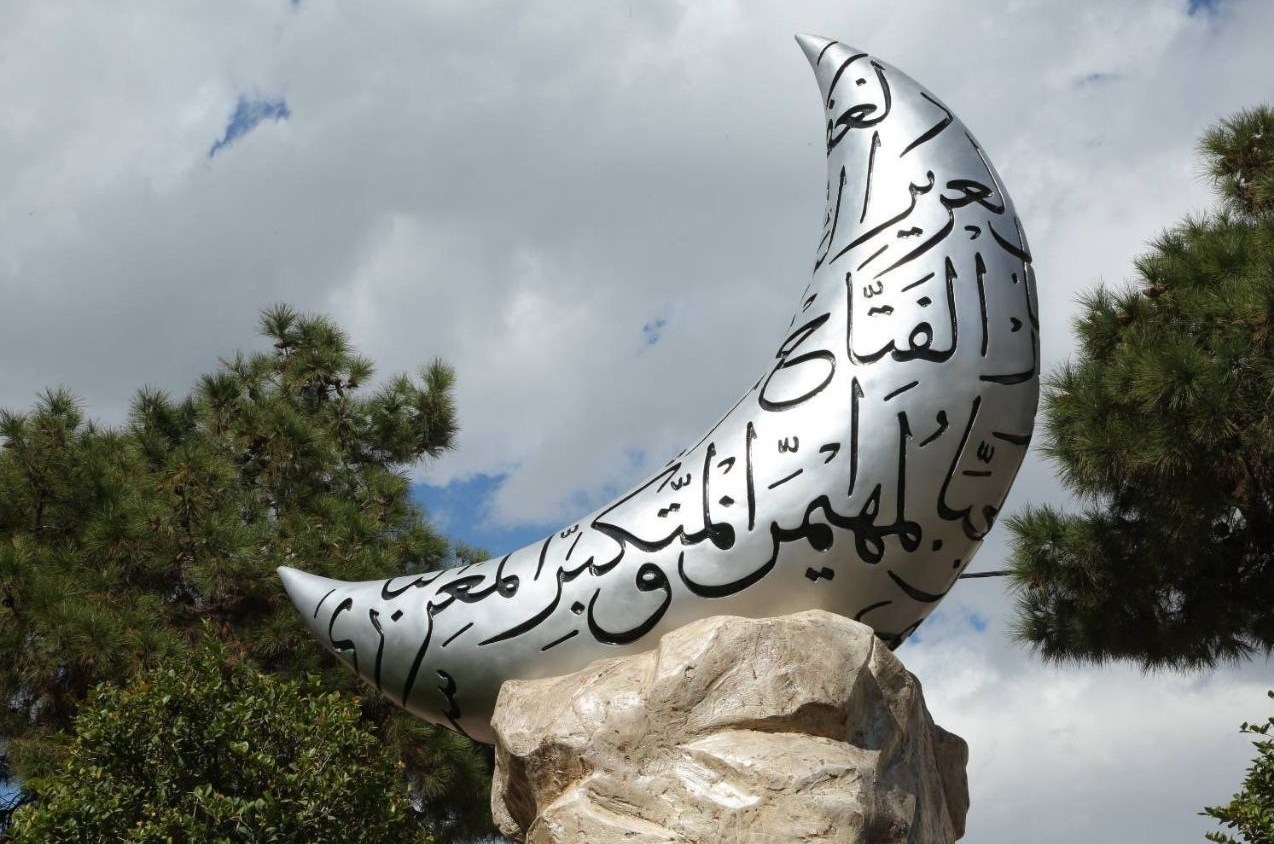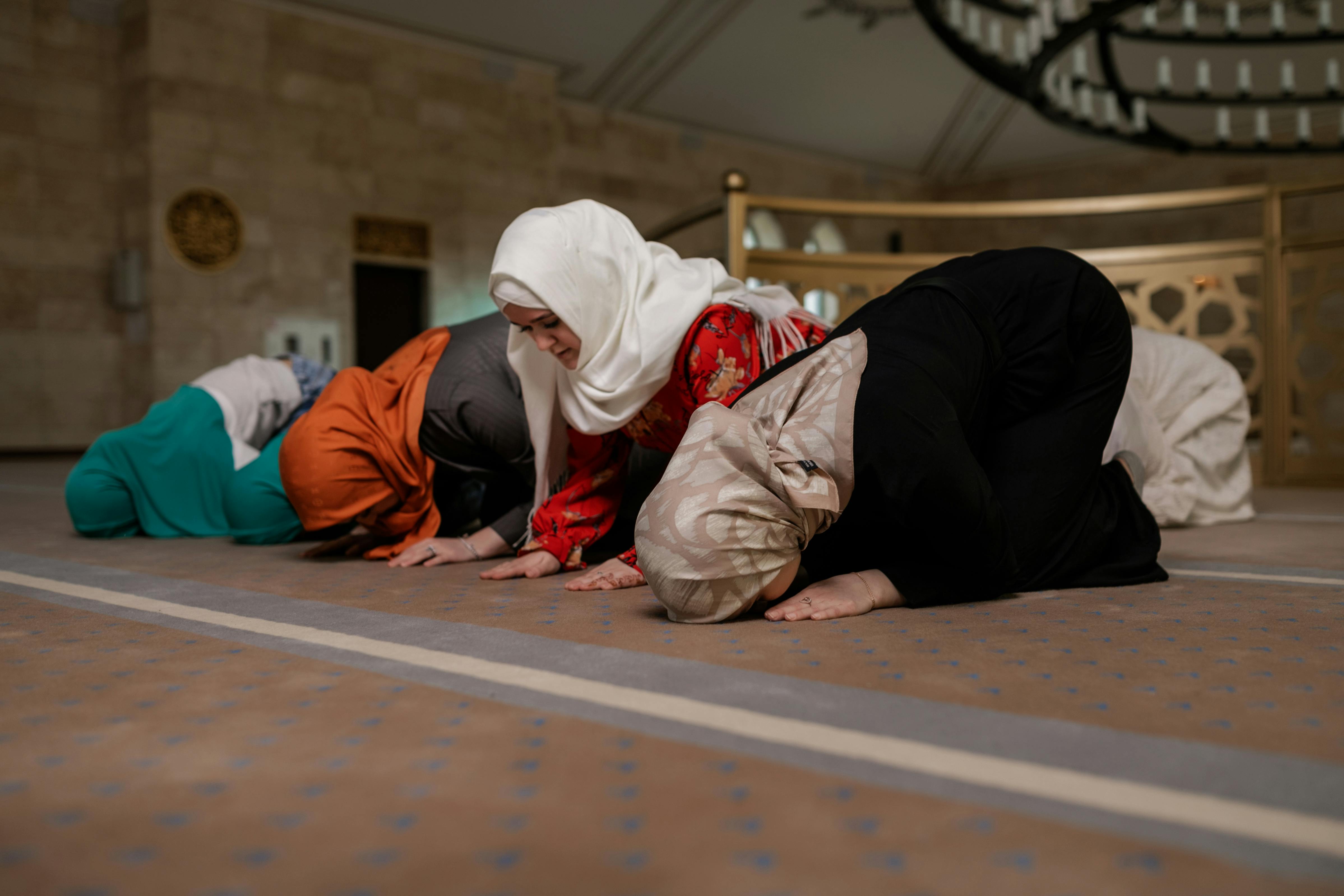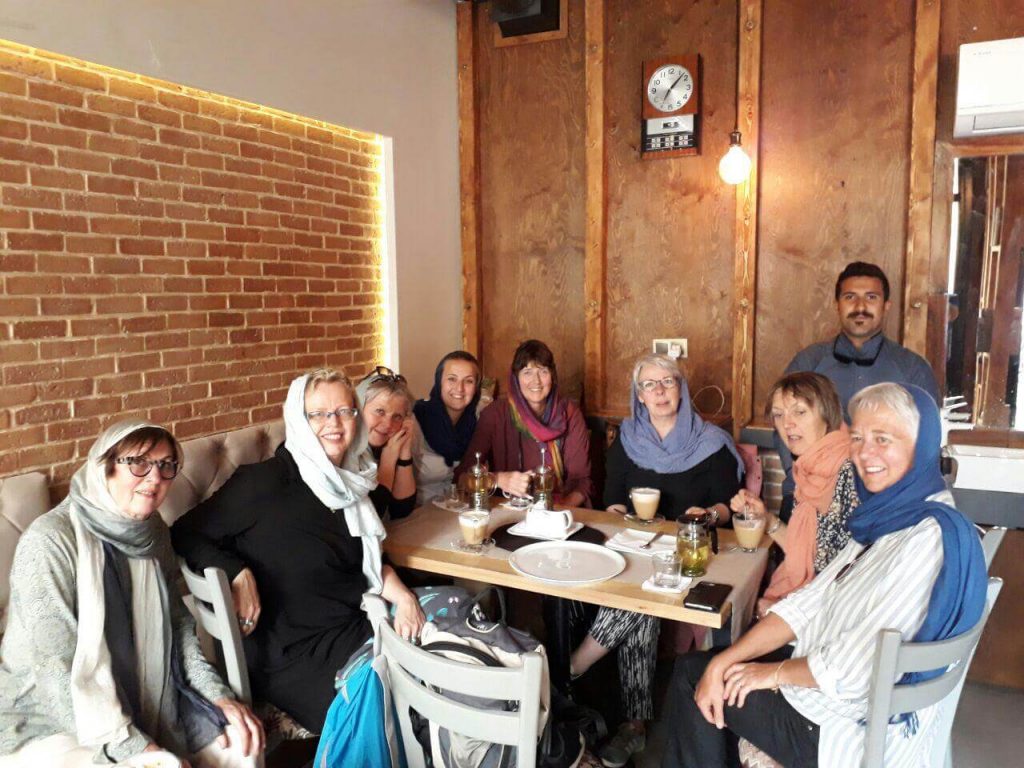Ramadan, the ninth stretch of the Islamic lunar calendar, marks a period of profound inner thought, abstaining from food and drink, and coming together for Muslims everywhere. In Iran, a nation with a rich background of customs and spiritual ways, this special month is observed with particular practices and habits that truly show the country's dedication and warm welcome. It's a time, you know, when people feel a deeper connection to their beliefs and to one another.
This holy time of going without food and drink, as a matter of fact, carries deep meaning for people who follow Islam across the globe, including those living in Iran, Saudi Arabia, and Malaysia. For about thirty sunrises and sunsets, followers of the Islamic faith choose not to eat or drink anything from the first light of dawn until the sun dips below the horizon. It's more than just a physical act, it's a way of life during this period.
But truly, Ramadan means much more than just not eating or drinking; it's a chance for quiet thought, for personal development, and for showing kindness to others. It's a period when people really try to improve themselves and move away from things that might make them feel bad. This month, you see, is about a whole way of living, about spiritual well-being and community spirit.
- Iran Nominal Gdp 2024
- Raza Mir Author
- Children Of Julianne Moore
- What Is A Back Shot
- Bruce Willis Net Worth 2025
Table of Contents
- The Spirit of Ramadan Iran
- What Makes Ramadan in Iran Special?
- Daily Life During Ramadan Iran
- How Do People Observe Ramadan Iran?
- A Taste of Ramadan Iran - Food and Fellowship
- What Culinary Delights Await During Ramadan Iran?
- The Moon Sighting and the Start of Ramadan Iran
- When Does Ramadan Iran Begin Each Year?
The Spirit of Ramadan Iran
Ramadan, the ninth month on the Islamic calendar, is a time of considerable cultural and spiritual importance within Iran. This sacred month, marked by the practice of going without food or drink from the early morning light until the evening's dark, represents a period for deep consideration, for strengthening ties with others in the community, and for personal spiritual advancement. It's a very unique time, a sort of collective pause for reflection that sweeps across the country, you know, bringing a certain quietness to the days and a lively spirit to the nights.
For those visiting the country, getting a real sense of what Ramadan means in Iran can really make their trip much richer. It offers a unique look into the heart of Iranian life and the sincere beliefs of its people. You get to see, for instance, how daily routines shift, how people gather, and the special atmosphere that settles over everything. It’s a chance to witness a culture deeply connected to its faith, and that’s pretty remarkable, actually.
The whole experience, in a way, provides an opportunity to see how deeply faith is woven into the everyday lives of people. It's not just about religious observances; it's about the feeling of togetherness, the shared anticipation of breaking the fast, and the quiet moments of personal thought. This collective experience, one might say, creates a special bond among everyone observing the month, making it a truly memorable time for both locals and visitors.
What Makes Ramadan in Iran Special?
So, what exactly sets the observation of Ramadan in Iran apart from other places? Well, a lot of it comes down to the country's unique cultural background and its particular way of expressing devotion. You see, while the core practices of fasting and prayer are shared by Muslims everywhere, the way these are expressed in Iran carries a distinct flavor. There's a certain elegance, a historical depth, that you can sense in the customs and gatherings.
For instance, the emphasis on hospitality is quite pronounced. Families often open their homes for iftar, the meal that breaks the fast, inviting neighbors, friends, and even strangers to share food and conversation. This act of sharing, it's almost, is a cornerstone of the month's spirit, fostering a strong sense of community and generosity. It's a beautiful thing to witness, really, how people come together over food and fellowship.
Then there are the specific Iranian traditions that add to the uniqueness. Things like certain foods prepared only during this time, or the particular way people visit mosques for evening prayers and special recitations. These elements, in some respects, contribute to a feeling of shared heritage and a deep connection to the past, making the experience of Ramadan in Iran something truly special and memorable for those who are there.
Daily Life During Ramadan Iran
During Ramadan, the daily rhythm of life in Iran undergoes a noticeable shift. From the first light of dawn until the sun goes down, people who follow Islam choose to go without food and drink. This means waking up before the sun appears for a meal called Sahari, which provides sustenance for the day ahead. It's a quiet time, usually, as families gather to eat before the fasting period begins, and then the morning prayers are said.
Throughout the day, the atmosphere can feel a little different. There's a sense of calm, a slowing down, as people conserve their energy and focus on their spiritual commitments. Workplaces might adjust their hours, and public spaces might be a bit quieter during the daylight hours. It's a time, you know, when people really practice patience and self-control, which is a big part of the month's philosophy.
As the day progresses and the time for breaking the fast approaches, a quiet anticipation builds. Streets that were calm earlier might start to buzz with activity as people head home or to gatherings for iftar. The evening, basically, transforms into a time of social connection and spiritual renewal, with families and friends coming together to share meals and prayers. This shift from daytime quiet to nighttime liveliness is a pretty characteristic aspect of Ramadan life.
How Do People Observe Ramadan Iran?
So, how do people truly observe Ramadan in Iran? It's a multifaceted experience that goes well beyond simply abstaining from food and drink. The month is, in fact, a time when Muslims around the globe put a strong focus on prayer, on giving to those in need, and on showing deep spiritual commitment. In Iran, these practices are woven into the fabric of daily life, creating a unique pattern of observance.
People often spend more time in mosques, attending special prayers and listening to recitations of the Quran. The evening prayers, particularly, draw large crowds, creating a powerful sense of collective worship. There's a strong emphasis on charity, too; many individuals and families make an extra effort to help the less fortunate, sharing their resources and time. This act of giving is seen as a way to purify one's wealth and spirit.
Beyond the formal acts, there's also a personal journey of reflection and growth. People try to improve their character, to be more forgiving, and to avoid negative behaviors. It's a chance, in a way, to reset and recommit to one's values. The atmosphere of shared purpose and spiritual dedication makes the observation of Ramadan in Iran a deeply personal yet widely communal experience, quite remarkable to witness.
A Taste of Ramadan Iran - Food and Fellowship
The culinary side of Ramadan in Iran is, to be honest, a very important part of the experience, especially when the time comes to break the fast. After a day of going without food and drink, the evening meal, known as iftar, is a moment of pure joy and togetherness. Families gather around tables laden with various dishes, eager to share the first bite and a sip of water after the sun has set. This shared meal is not just about sustenance; it's about connection and celebration.
One particular sweet treat that holds a special place during this month is Halva. This popular sweet delicacy in Iran is, actually, a famous Iranian dessert that often makes an appearance during Ramadan, and also, quite commonly, at Iranian funerals. It's a rich, comforting food, made from simple ingredients that come together to create something truly delightful. The process of making it, you know, can be a labor of love, passed down through generations.
The main ingredients for this Iranian dessert are flour, along with oil, sugar, cardamom, and rosewater. These components combine to create a fragrant and satisfying treat. Its appearance can vary, ranging from a light golden color to a deep brown, depending on how it's prepared and baked. It's a dish that, in some respects, embodies the warmth and generosity of Iranian hospitality, often served to guests as a gesture of welcome and kindness during the holy month.
What Culinary Delights Await During Ramadan Iran?
So, what sort of culinary delights can one expect to find and enjoy during Ramadan in Iran? Beyond the well-known Halva, the iftar table is typically filled with a variety of nourishing and comforting foods. Dates are, of course, a common first item to break the fast, often accompanied by a glass of warm water or milk. This tradition is, basically, a gentle way to reintroduce food to the body after hours of fasting.
You'll often find different kinds of soups, like Ash-e Reshteh, a hearty noodle soup that's very popular and quite filling. There are also various bread types, fresh herbs, cheese, and sometimes special omelets or light stews. The emphasis is on foods that are both satisfying and easy on the stomach after a long day. It’s a bit like a carefully chosen spread, designed to provide comfort and energy.
Sweet pastries and drinks are also a big part of the evening's offerings. Beyond Halva, you might find Zulbia and Bamieh, which are fried sweets soaked in syrup, very popular for their sweetness and texture. These treats, in a way, add a celebratory note to the evening meals, making iftar a truly special and anticipated event for everyone involved. It's a time when food becomes a focal point for family and community connection.
The Moon Sighting and the Start of Ramadan Iran
The beginning of Ramadan is determined by the sighting of the crescent moon, which marks the start of the ninth month in the Islamic calendar. This practice connects the community directly to the natural world and to ancient traditions. For example, in Iran, this process involves a very specific and rather organized effort to confirm the moon's appearance, ensuring that the entire nation begins the holy month at the same time.
Hundreds of Iranian religious figures, actually, will scan the skies with special viewing devices on a particular evening, often perched on high ground or even from airplanes. Their one important task is to spot the thin crescent moon. Once it's seen, they report this observation to the country's supreme leader, who then makes the official announcement that Ramadan has begun. This tradition, in a way, highlights the communal aspect of religious observance and the importance of precise timing.
This method of determining the start of the month means that the exact date for Ramadan can shift slightly each year, depending on astronomical conditions and the actual sighting. For instance, Ramadan 2025 in Iran is expected to start around February 28 and finish on March 30, but this is always subject to the moon's actual appearance for precise observance. This makes the anticipation of the moon sighting a truly collective and exciting event for many.
When Does Ramadan Iran Begin Each Year?
So, when exactly does Ramadan in Iran begin each year? Well, as we just talked about, it all depends on the sighting of the moon. The Islamic calendar is a lunar calendar, meaning its months are based on the cycles of the moon, which is different from the solar calendar we often use. Because of this, the start date of Ramadan shifts earlier by about ten or eleven days each year when compared to the Gregorian calendar. This means, for example, that Ramadan 2026 in Iran will start a little earlier than it did in 2025, and so on.
This yearly shift means that people need to keep track of the specific timings for prayer and for breaking the fast. Many communities and religious organizations provide calendars that show the accurate times for Sahari (the pre-dawn meal) and Iftar (the evening meal) for various cities across Iran, like Tehran. These calendars are, basically, very helpful tools for Muslims to plan their fasting timetable and ensure they are observing the month correctly.
The whole process of waiting for the moon and then adjusting daily routines accordingly creates a sense of shared experience and anticipation across the country. It’s a very practical aspect of observing the holy month, but it also ties everyone together in a common rhythm. This reliance on the moon's appearance, you know, makes each year's Ramadan feel unique and personally connected to the natural world around us.
Ramadan, often pronounced "Ramazan" by Iranians, is a very significant time for Muslims in Iran, observed as a month of going without food and drink, prayer, and quiet thought. It is the ninth month of the Islamic calendar and is considered the most sacred month in Islam. This period, you see, is not just about personal devotion; it's also about community spirit and resilience, particularly in a region that often faces its own set of difficulties.
Muslims across the Middle East, including Iran, welcome Ramadan despite various challenges such as ongoing conflicts and economic pressures. Even with fragile ceasefires in places like Gaza and Lebanon, and shifting situations for countries like Syria, the region prepares for this Islamic holy month with a shared sense of purpose and hope. This shows, in a way, the deep importance of the month and its power to bring people together even when things are tough.
The spirit of Ramadan in Iran, as we've discussed, is a blend of deep spiritual practice, unique cultural traditions, and a strong sense of community. From the precise timing of prayers to the communal breaking of fasts with special foods like Halva, and the collective effort to sight the moon, every aspect reflects a profound devotion and a welcoming spirit. It's a time for inner reflection, for growth, and for showing kindness, making it a truly special period in the Iranian calendar.
Related Resources:



Detail Author:
- Name : Mr. Declan Mohr II
- Username : barton.jessica
- Email : sconnelly@gmail.com
- Birthdate : 1983-08-31
- Address : 89888 Bednar Vista Suite 407 Port Mervin, RI 81840
- Phone : 1-503-778-3580
- Company : Goldner, Bogisich and Schumm
- Job : Geographer
- Bio : Voluptate perspiciatis nesciunt deleniti exercitationem. Et inventore et ipsam sed fugit culpa. Vel animi deleniti vitae sapiente.
Socials
tiktok:
- url : https://tiktok.com/@vbernier
- username : vbernier
- bio : Molestiae quis expedita qui perspiciatis. Porro exercitationem eius amet aut.
- followers : 4266
- following : 2162
twitter:
- url : https://twitter.com/bernierv
- username : bernierv
- bio : Labore autem sit vel qui. Neque dolores quas eos soluta iusto. Qui nemo dolorum inventore. Ea ut est atque.
- followers : 2855
- following : 2070
facebook:
- url : https://facebook.com/victor_bernier
- username : victor_bernier
- bio : Laboriosam quos occaecati eum. Nulla sit fuga quia et numquam.
- followers : 2371
- following : 276
linkedin:
- url : https://linkedin.com/in/bernier1970
- username : bernier1970
- bio : Aut doloremque voluptates cumque voluptates.
- followers : 6546
- following : 1013